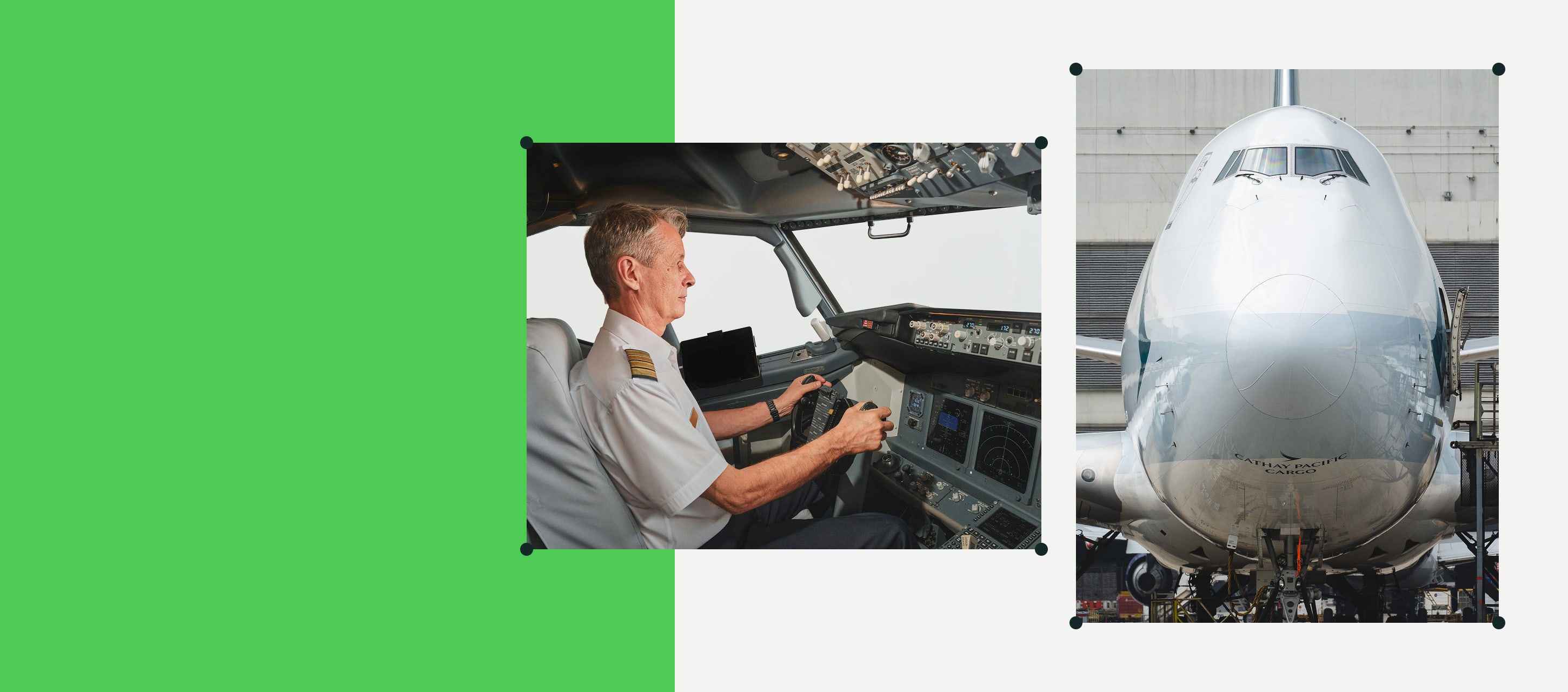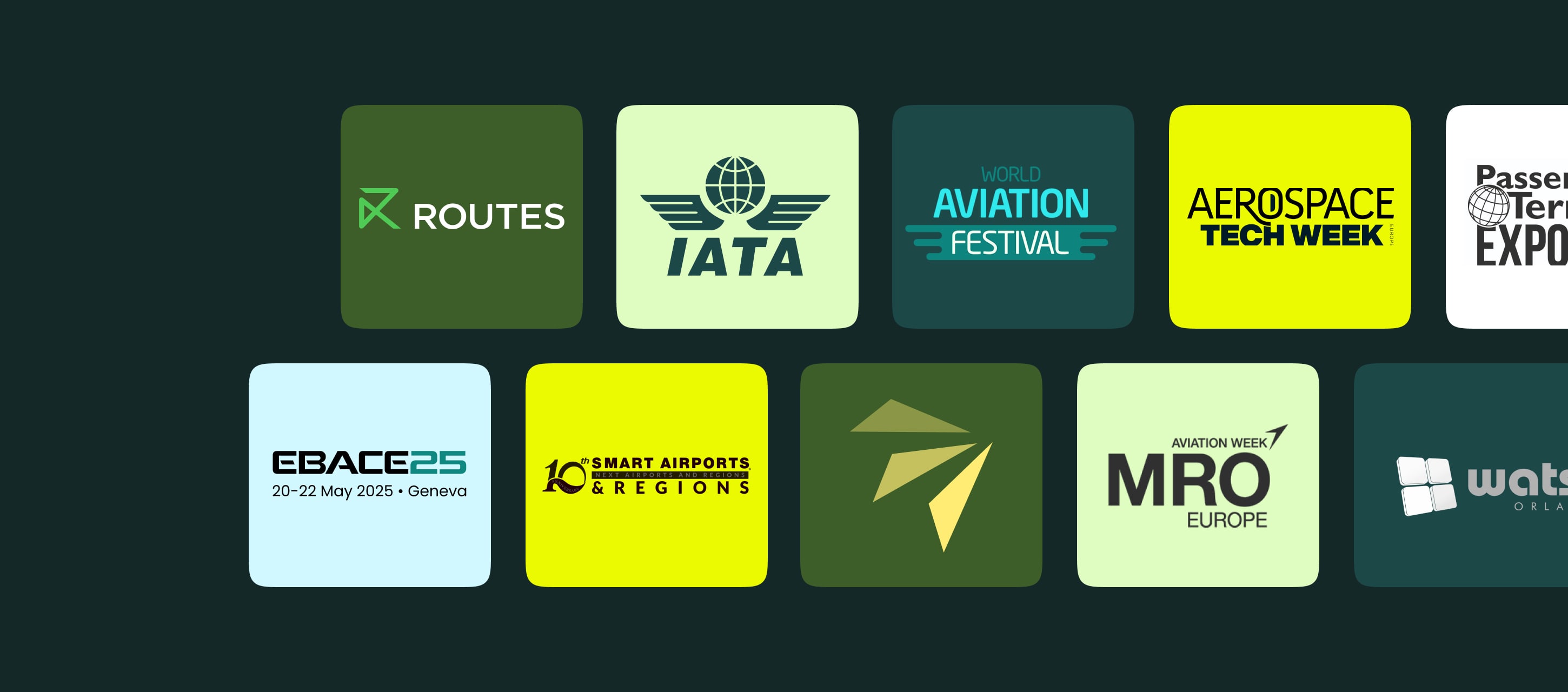Even at the end of 2023, the airline industry is still recovering from its extremely low number of flights in 2020. In 2019, there were over 39 million global registered carrier departures, but only 20.5 million in 2020.
The International Air Transport Association’s 2022 annual review predicts that “By the end of 2023, most regions will be at — or exceeding — pre-pandemic levels of demand.” Still looking forward to this though.
But despite that, people worldwide depend on airlines to transport passengers and cargo around the clock. Aviation industry operational managers, inspectors and safety managers know the challenges that this constant movement creates all too well. Digitalization in aviation industry and MRO procedures and requirements makes it easier to address and overcome these challenges.
How Did the Covid Pandemic Affect the Aviation Industry?
The recent global pandemic eroded passengers’ confidence in the airline industry and created many other problems as well. Commercial carriers and MRO providers lost unprecedented amounts of projected revenue due to canceled flights. Thousands of aircraft were grounded and put into long-term storage. Many companies were forced to lay off or terminate employees.
This unfortunate period allowed many in the aviation industry the time and opportunity to begin implementing new technologies to promote organizational efficiency, rebuild customer confidence, streamline communications and optimize processes. For those looking to facilitate these improvements, understanding that airline digital transformation is necessary isn’t enough.
Implementing this transformation doesn’t mean that you have to do away with existing systems; instead, you should analyze them to identify inefficiencies.
Having clear goals in mind helps you find the right tools to improve your technology stack’s performance. You can enhance operational efficiencies by selecting an aviation management solution that you can integrate into your current business processes.
What Challenges Does the Aviation Industry Face?
Completely overhauling your systems sounds like an overwhelming and daunting process, but it doesn’t have to be. Every airline and MRO is different, with varying needs, but most face similar problems. Fluix provides easily implemented and easy-to-use scalable solutions.
1. Technological Readiness
Increasingly complex aircraft systems, maintenance equipment and services are creating the need for digitalization in aviation industry platforms and tools that can keep pace with technological advances.
Many in the existing workforce don’t have the necessary skills to apply these new technologies effectively. Not only should you find the right tools for the job, but you also need to provide thorough training for your employees.
2. Compartmentalization
MROs and airlines already use digital maintenance logs, AI and big data. The goal is to save costs, provide a better customer experience and improve performance in maintaining aircraft. However, that alone isn’t enough to stay up with airline technology trends.
Many departments utilize independent software systems, making sharing vital data extremely difficult. The individual systems often use various formats, presenting another barrier. To overcome this challenge, those in the aviation industry need scalable tools that allow them to sync and share crucial data seamlessly.
3. Response to Changing Customer Preferences
Technology is constantly evolving, and people’s expectations change often as a result. Airline digital transformation must cater to customer and employee preferences as part of your organization’s overall profitability. Some of today’s airline technology trends provide tools that:
- Allow for digital signatures
- Reduce human error
- Reduce or eliminate the need for paper documents
- Automate decision-making processes
- Facilitate communications
- Digitize aircraft maintenance data
- Automate passenger check-ins
- Reduce the need for in-person contact
As your needs change, the technological solutions you use need to be able to adapt.
4. Bringing Aircraft Out of Storage
The worldwide Covid pandemic saw a dramatic decrease in the number of aircraft needed to meet demands. Almost 17,000 airplanes were grounded and stored during that time. Although precautions were taken to protect sensitive equipment, these planes still needed regular maintenance.
Many of the grounded aircraft are returning to active service. This process requires in-depth maintenance to ensure that all systems are operational and meet safety standards.
By implementing digitalization in aviation industry automated workflows and data sharing, you’re:
- Reducing the risk of employees forgetting to perform essential checks
- Facilitating easy communications with other personnel
- Providing an easily accessible platform that allows access to stored data
- Allowing your teams to work faster
- Establishing a traceable document flow
- Streamlining data compilation and documentation
- Eliminating redundancies
These benefits make bringing aircraft out of storage more cost-effective and less labor-intensive. Your bottom line will thank you.
5. Keeping Up With Airline Technology Trends
It often seems like someone introduces a new technology every other day. When another airline or MRO adopts these technologies, you’ll lose your competitive edge if you don’t follow suit. Investing in multiple platforms to keep up isn’t cost-effective, however.
When you’re searching for airline digital transformation tools, you need to consider their long-term effectiveness. Scalable systems grow with you, adding new features as they’re developed. You’ll see a greater return on investment along with many other overall improvements throughout your organization.
See How Much Compliance Paperwork Is Really Costing You
6. Maintenance-Related Ground Time
When planes aren’t in the air, they’re not making money. Whether an aircraft needs routine maintenance or repairs, your goal is to make it safe to fly as quickly as possible. That doesn’t necessarily mean that technicians need to rush; in fact, rushing increases the chances of making potentially dangerous errors.
Using the right digital platform:
- Eliminates the need for bulky maintenance manuals
- Correlates maintenance predictability data
- Provides procedural information and easily accessible checklists
- Optimizes workflows to streamline operations
Effective tools — wrenches and digital transformation tools alike — make maintenance-related tasks easier and faster, thus letting your aircraft spend more time in the skies.
7. Workflow Management
In maintenance operations, everyone needs to follow the correct procedures. When technicians have trouble accessing data related to their tasks, it takes longer to complete them. There’s also an increased likelihood of errors. You can address these issues by automating your workflows through digitalization.
Digitalization in aviation industry workflows automates:
- Project checklists
- Task assignments
- File sharing
- Real-time team collaboration
Using workflow automation tools also decreases your risk of non-compliance. Technicians, office staff, inspectors and management will all notice the time and effort saved.
8. Mobility
Gone are the days when technicians and other personnel had to walk or travel to computer workstations to enter or access data. In today’s world, people want mobile access.
With Fluix, you can use your laptop, desktop, tablet or mobile app to bring crucial information to your fingertips wherever you are. Airline digital transformation mobility saves frustration, time and money. It also:
- Allows real-time communication between ground staff and crew
- Provides convenient access to vital documents and data
- Facilitates enhanced knowledge capture
The Fluix platform syncs data across multiple devices to provide up-to-the-minute information.
9. Errors
In An Essay on Criticism, the 18th-century poet Alexander Pope said, “To err is human; to forgive, divine.” Unfortunately, people’s expectations and aircraft safety don’t leave room for errors. Improper maintenance procedures rarely leave an opportunity for forgiveness.
When you use the Fluix digitalization in aviation industry platform, you’re reducing the likelihood of many kinds of errors, from typographical and grammatical errors to delicate aircraft repair errors. A reduction in errors can increase customer confidence and reduce the risk of flight issues.
10. Data Availability
Multiple people throughout your organization need immediate access to varying levels of data. Older technology and compartmentalization often hinder data availability and typically require manual labor and numerous steps. Delays are usually detrimental to your organization’s workflow.
Digitizing your forms, data and documents in the easily accessible and constantly syncing platform that Fluix offers, provides multiple benefits, including:
- A decrease in redundancies, manual paperwork and processing time
- The ability to assign administrative rights and data access to employees individually according to their needs
- Streamlined searching and distribution
- Better protection against sensitive data loss
- Assurance that you meet industry-specific and country regulations
- An easy way to obtain legally-binding digital document signatures
- An understanding of whom to contact if your need requires direct communication
- Ensuring that proposed projects are viable at an early stage
The ability to access the data you need when you need it is a vital component of your airline digital transformation strategy. It not only streamlines individual processes but also strengthens your organization as a whole.
11. Document Transfers
Many projects require document transfers between multiple parties. These transfers can be time-consuming and challenging if you’re not using suitable technology to facilitate them. Fluix users benefit from:
- Smart PDF forms
- Easy editing
- Bulk sending
- Saved templates and mobile forms
- Geo-tagging
- Collaboration tools
- The elimination of the need to manually transfer data
- Secure cloud-based document storage
The Fluix platform allows you to organize, store, manage and access all of your documents in a central location. You can also automatically forward documents to third-party record-keeping systems to meet compliance and safety requirements.
12. Communication
Communications between crews, ground staff, management and inspectors are a necessary part of any aviation organization. Searching for phone numbers and email addresses is time-consuming.
Including modern communication methods as part of your airline digital transformation plan is essential. The Fluix digital briefing feature facilitates easy communication and streamlined data flows.
13. Audit Trail
One document or piece of data is likely to pass through several hands. For security, compliance and transparency, it’s vital that you can trace the progress of these items. If you use several independent systems to manage your data, the audit trail is sometimes challenging to follow and may not adhere to mandated standards.
With Fluix as your digitalization in aviation industry platform, the integrity of your audit trail is protected.
14. Decision Making
Every member of your organization makes decisions every day. People can make better decisions when they have up-to-date information from a variety of sources. Unless you can access this information easily, it can be challenging and time-consuming to compile.
Fluix centralizes data storage, making it a simple process to capture and analyze actionable data with advanced reporting options.
15. Operational Awareness
To run a successful operation, key personnel need real-time operational awareness. In the aviation industry, you need to know things like:
- Live flight information in real-time
- Maintenance status on a particular aircraft
- Airport conditions
- System errors
- Passenger issues
- Cargo shipper requests
- Parts inventory levels
Fluix grants access to this up-to-date data so you can respond to any issues quickly.
Why Should You Choose Fluix as Your Airline Digital Transformation Partner?
Many providers offer business process automation platforms, so why should you select Fluix? Because we’re an easy-to-use yet powerful system that produces measurable and immediate results by giving you everything you need to digitise your flight operations, including:
- Electronic flight bags. Redefine in-flight organization by integrating essential documents, lightening the load by up to 25-30kg. Invaluable time can be saved as Fluix facilitates real-time document distribution to pilots, cabin crew, and maintenance engineers.
- Aircraft maintenance workflows: Digital forms replace paper-based systems, ensuring accessibility from both desktops and mobile devices. Critical insights are gleaned from collected data, enabling trend analysis, early detection of degradation, and informed preventive maintenance decisions.
- Safety compliance: Meeting industry safety standards hinges on centralized document storage and rapid accessibility – precisely what Fluix offers. Document history is tracked, ensuring accountability at every step. Unique document statuses simplify navigation, while an impenetrable safeguard ensures that only assigned managers can edit documents.
- Pilot training: All data required for evidence-based training is collected on iPads, revolutionizing training workflows. Fluix orchestrates the training journey, from initial documents to comprehensive pilot and cabin crew training files. Aspiring aviators take flight armed with data-driven insights and modern training methodologies.
Your organization can deploy our scalable solutions quickly, easing your transition from your current systems to our all-in-one platform. Our customer service team studies the core industries we serve, meaning that you’ll get support from people who understand the unique needs of the aviation industry. Create a Fluix account today to initiate your 14-day trial.






